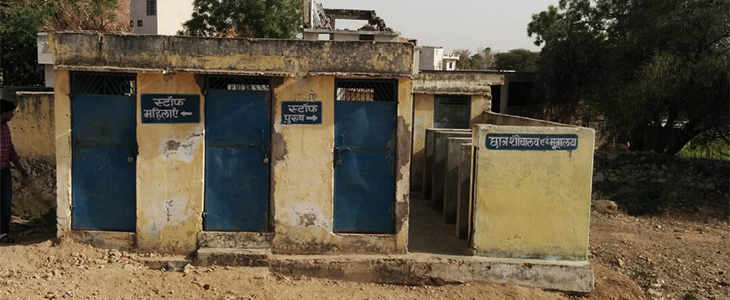
Ends over Means – Questions on the Implementation of the Swachh Bharat Mission
8 May 2017
Bill Gates recently wrote that India is winning its war against waste. It is perhaps too soon to predict outcomes, but there is no denying that a strong start has been made to the efforts. The ten days between 21st April and 2nd May, 2017 saw 1400 villages and 2 districts declared free of the menace of open defecation, taking the total to 1,93,374 and 136 respectively. Over 39 million toilets have already been built under the mission. These are almost unbelievable numbers.
The fury with which toilets are being constructed is evident on the ground. Doubts as to whether these toilets are usable and sustainable are occasionally, but reasonably voiced. There are however other equally important questions which merit consideration but remain largely unexamined. Not least of which is, how are these toilets being built?
Any government has three means to implement its policies, namely, Mandates (decrees and coercive power), Incentives (and disincentives), and Information. Each of these has a different underlying assumption, and implementation of most policies requires combinations of them to be employed. The use of Mandates assumes that people are able but unwilling to change a certain behaviour, and therefore must be forced to do so in the larger interest. Incentives hinge on the assumption of economic rationality, shaping behaviour with rewards and penalties. The use of Information presupposes the inherent benevolence of people which requires only that they be shown the correct path.
So how is implementation taking place in the SBM? It aims to follow variants of the celebrated Community Led Total Sanitation (CLTS) approach which depends on Information to bring behaviour change. The CLTS categorically states that it is a means of facilitating change at the community level, and that toilet construction is not by itself the panacea. It also requires that demand for toilets be generated from the bottom up, and that change be driven and sustained by the community itself once it has been “triggered”. The SBM guidelines too proclaim that coercion is against the spirit and intent of the mission, although the scheme is more pragmatic, combining the use of information with incentives. That is, at least in theory.
Reality appears as a top down enforcement of large scale toilet construction. The process of reaching 100% toilet coverage in a Gram Panchayat is often effected through threats of exclusion from critical social welfare schemes including the PDS and NREGA, public naming and shaming of villagers caught defecating in the open, and most worryingly, the segregation and targeting of children in schools. Such stories have been reported from districts across the country, suggesting that these aren’t isolated cases of overzealous local officials exercising discretion, but a template of activities that has been received by them.
The result is that families are often compelled to take loans at usurious rates to construct toilets they cannot afford, and which may or may not be usable, and may or may not be used. This approach to total sanitation with all its ‘maybes’ raises two worries. One, that the issue of sanitation is being relegated to technicality, with ODF declarations being based on construction targets. And two, that the manner of implementing these technical solutions is violating rights.
Forcing people to construct toilets is only half the task. Enforcement of use needs to resort to policing. Local led policing is purportedly meant to empower the community. But with the panchayats leading the effort, the monitoring teams are usually comprised by the village elite. The perpetrators, on the other hand, come primarily from the marginalised sections of society, who lack the means and resources to construct workable toilets.
Paternalism is not a new approach in the sanitation space, in India or elsewhere. Such an approach implies a sense of superiority, exasperation at the ignorance of the uneducated villager, and the insistence that such yokels must be forced to do things for their own good. India’s complicated history of segregation and social sanctions based on notions of cleanliness only raises the possibility of unintended outcomes. Even an oblique endorsement of such means without considering all their implications is worrisome.
Whether the ends justify these means is a difficult question, one for which there is no straightforward answer. But it is more pertinent here to ask, will all of this even work? What if coercion leads to resistance? It might work if we intend to perpetually surveill defecation practices, so that resentment does not eventually lead to relapse. But as the Sarpanch of an ODF Panchayat said to me, “how long can we keep monitoring people, now that we are already ODF?”
It is likely that as villages receive their accolade, the efforts will cease, the mission will end, and self-congratulatory victory celebrations will begin. Yet even now, civil disobedience is not uncommon among owners of recently constructed toilets. Those wishing or having to defecate in the open have braved the inconvenience of avoiding their favourite haunts. A reassessment of tactics may not be inopportune at this juncture in our war.





